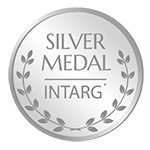Lista wynalazków
Prezentacja wynalazku
ZoP Processing of tires by cryo-vibrating method
autorzy: Andrii Mavrin
Cryo-vibrating method is needed to solve the problem of tire recycling, because now only 50% of the world's tires are disposed of 7-10 million tons of tires used each year, because using methods are often very expensive, spoil the materials from which the tire is made, due to the loss of their useful properties or harmful to the environment due to emitted toxic gases. But the worst case scenario is another 20%, when tires are just burned, because at one moment we poison nature and lose materials that could be reused. Therefore, the search for the best method, which can be cryo-vibrating, is still ongoing today. It is that the tire must first be frozen to -80 - -100 ° C in liquid nitrogen in order to increase the fragility of the rubber for easier destruction. It was found that cooling to a lower temperature does not make sense, because the fragility will hardly change, and the cost of liquid nitrogen will only increase. After that, the tire must be vibrated at the resonant frequency of the rubber. During the experiment, it was found that the resonant frequency for different rubber samples, which differ by different impurities and types of rubber, is in the range of 6-8 kHz. As a result of vibration, the amplitude of oscillations of rubber will increase, its energy will increase too, so rubber will crumble into a rubber crumb the size of a grain of sugar and separate from steel cord. Thus, the materials obtained after recycling can be reused in industry, for example, to remelt steel, and rubber crumb can be used as a regenerate for new tires, part of the road surface or sports ground. In addition, the cryo-vibrating method of processing is cheaper than electromechanical, more environmentally friendly than pyrolysis, and retains the valuable properties of rubber, in contrast to barodestructive.

Giełda wynalazków
Medal

Srebrny Medal
Ochrona własności intelektualnej
Patent - przyznany
poziom gotowości technologicznej
TRL 4 skala laboratoryjna








